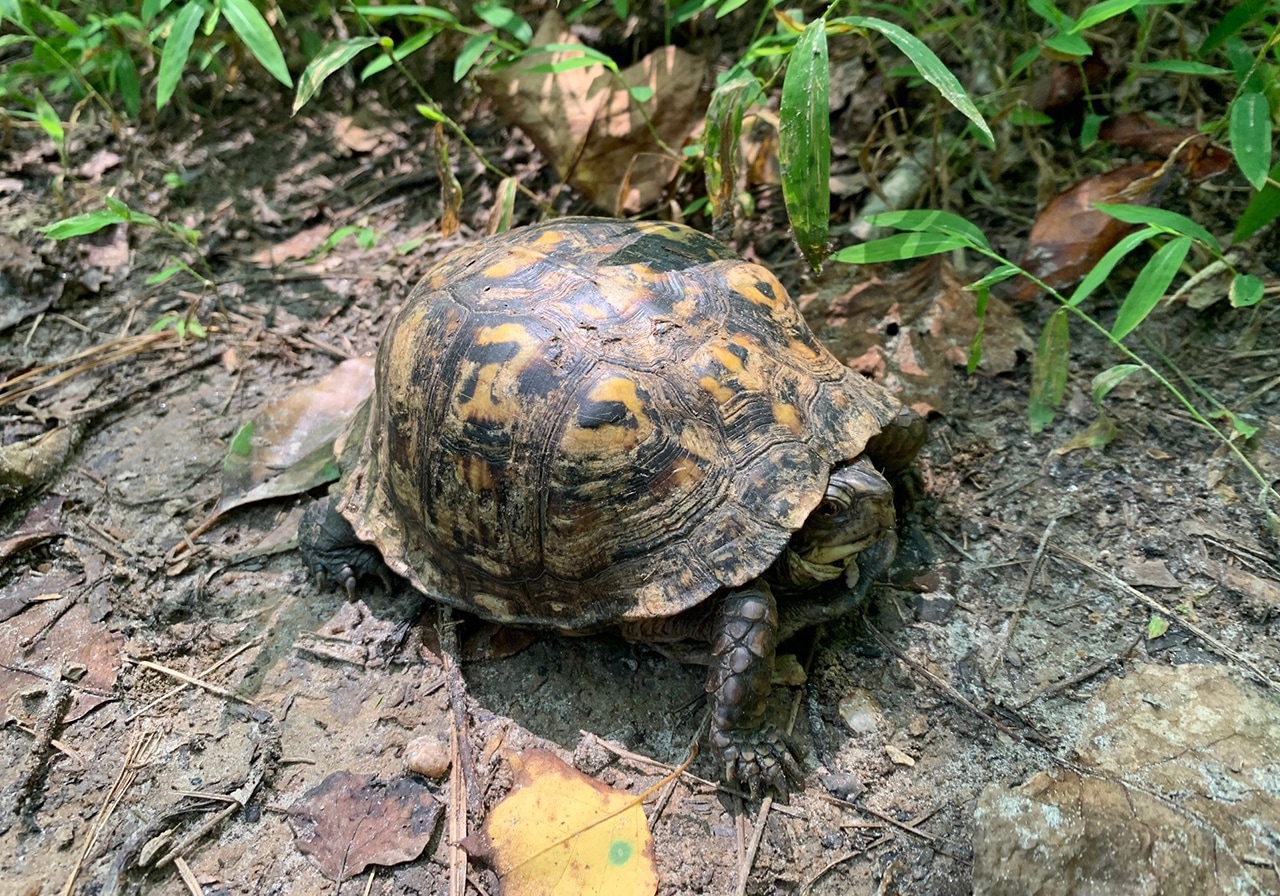Reptiles, Wildlife in the Park
[[translate(episode,'title')]]
[[translate(episode,'audioCredit') || translate(episode,'credit')]][[translate(episode,'title')]]
[[translate(episode,'audioCredit') || translate(episode,'credit')]]Audio Transcript
With all the different ecosystems making up the Ann and Jim Goodnight Museum Park, this site attracts and supports a variety of animals.
Visitors are sure to recognize the deer that wander around our grounds, especially one large, beautiful buck with large antlers. You can usually spot him in the morning, but he will let you know—with his loud huffing and stomping—that he needs his space, and you should keep your distance.
You’ll also encounter groundhogs, rabbits, opossums, foxes, coyotes, and gray squirrels. There are also lots of small mammals in the meadows and around the pond, such as white-footed mice and meadow voles. These little, furry mammals are difficult to spot but can occasionally be seen popping out of tall grasses to dart across the path. They feed on seeds and insects and are important food sources for the hawks, owls, snakes, and foxes in the Park.
The stream and the pond offer a special habitat for local amphibians and reptiles. When it rains, the frog community comes out to greet visitors. Cricket frogs, southern leopard frogs, spring peeper frogs, and toads can all be seen and heard around the Park.
You can find various turtles in the Park. If you are lucky, you will spot an eastern box turtle along the woodland trail. A common snapping turtle can frequently be seen basking in the sun beside the pond.
And we can’t talk about amphibians and reptiles without mentioning the snakes that live in the Park.
The northern water snake is nonvenomous, but it will defend itself if threatened. One large northern water snake lives in the pond, and others can be found sunbathing near the stream.
It’s important to remember that our wildlife are residents here and should be left alone—for your safety and theirs. We encourage taking photos, but from a distance. The behavior of wild animals is very unpredictable.
Interacting with wild animals can also disrupt the animal’s natural rhythm, with traumatic or even deadly consequences. For example if you see a baby deer that seems to be by itself, its mother has left it for the day to go feed. She will come back, so you never want to move or touch the baby, because then the mother might smell your scent and not recognize her baby.
We love the animals that populate the Park, and we encourage you to love them, too … from a distance, that is.
